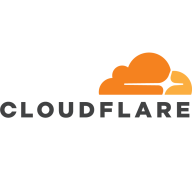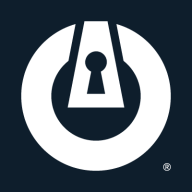

Cloudflare One and ThreatLocker Zero Trust Endpoint Protection Platform are major players in cybersecurity, each focusing on distinct areas. Cloudflare One has the advantage in network security and threat intelligence, while ThreatLocker shines in endpoint security and application control.
Features: Cloudflare One offers dynamic threat intelligence, seamless system integration, and comprehensive network protection. ThreatLocker provides granular application control, aggressive threat containment, and detailed audit logs. Cloudflare boasts strong network protection capabilities, whereas ThreatLocker offers deep endpoint security.
Room for Improvement: Cloudflare One can enhance its user interface for easier navigation and streamline its setup process. Improving threat investigation tools would increase its overall utility. ThreatLocker could benefit from more granular reporting tools, better integration options across more platforms, and a flexible pricing model. Developing these aspects could enhance its appeal.
Ease of Deployment and Customer Service: ThreatLocker is noted for easy deployment and responsive customer support, fostering user satisfaction. Cloudflare One, with a more detailed onboarding process, ensures comprehensive support, though its deployment is less streamlined compared to ThreatLocker.
Pricing and ROI: Cloudflare One offers scalable pricing, competitive initial costs, and significant ROI through effective network security. ThreatLocker, despite a higher upfront cost, provides substantial ROI via advanced security and management efficiencies. Organizations may prefer Cloudflare for cost-effective network solutions, while ThreatLocker attracts those prioritizing endpoint security despite higher costs.


Cloudflare One is a single-vendor Secure Access Service Edge (SASE) platform that enables Zero Trust security and any-to-any connectivity across enterprise applications, users, devices, and networks. Cloudflare One helps organizations simplify, modernize, and consolidate their IT architecture by converging security and networking services on our single global network and control plane.
Many organizations start by adopting our Security Service Edge (SSE) services — like ZTNA, SWG, CASB, and DLP — to reduce their attack surface, stop threats like phishing and ransomware, protect data, and apply identity-based Zero Trust verification across web, SaaS, and private app environments. Others prioritize simplifying network connectivity across offices, data centers, and cloud environments with our WANaaS.
Every service is available for customers to run in every location across Cloudflare’s global network, which today spans 330+ cities in 120+ countries, so you can scale connectivity with fast, consistent protections everywhere.
ThreatLocker Zero Trust Endpoint Protection Platform offers robust endpoint security through application control and allowlisting, safeguarding servers and workstations from unauthorized software execution.
ThreatLocker Zero Trust Endpoint Protection Platform provides extensive application control with features like ring-fencing and selective elevation, ensuring meticulous execution management. Offering learning mode and extensive support, it integrates threat detection and activity monitoring to enhance compliance, reduce costs, and bolster cybersecurity through alerts and approvals. Despite its strengths, there are areas for improvement in training flexibility, policy updates, and interface enhancements, along with challenges in handling non-digitally signed software. Deployed across environments, it works well with existing cybersecurity instruments for real-time threat prevention.
What are the top features of ThreatLocker?ThreatLocker Zero Trust Endpoint Protection Platform is widely implemented to safeguard IT infrastructures against unauthorized access and application use. In sectors where data security is paramount, this platform enables users to prevent unauthorized software installations and control device applications, ensuring real-time threat prevention and compliance with industry regulations.
We monitor all ZTNA reviews to prevent fraudulent reviews and keep review quality high. We do not post reviews by company employees or direct competitors. We validate each review for authenticity via cross-reference with LinkedIn, and personal follow-up with the reviewer when necessary.